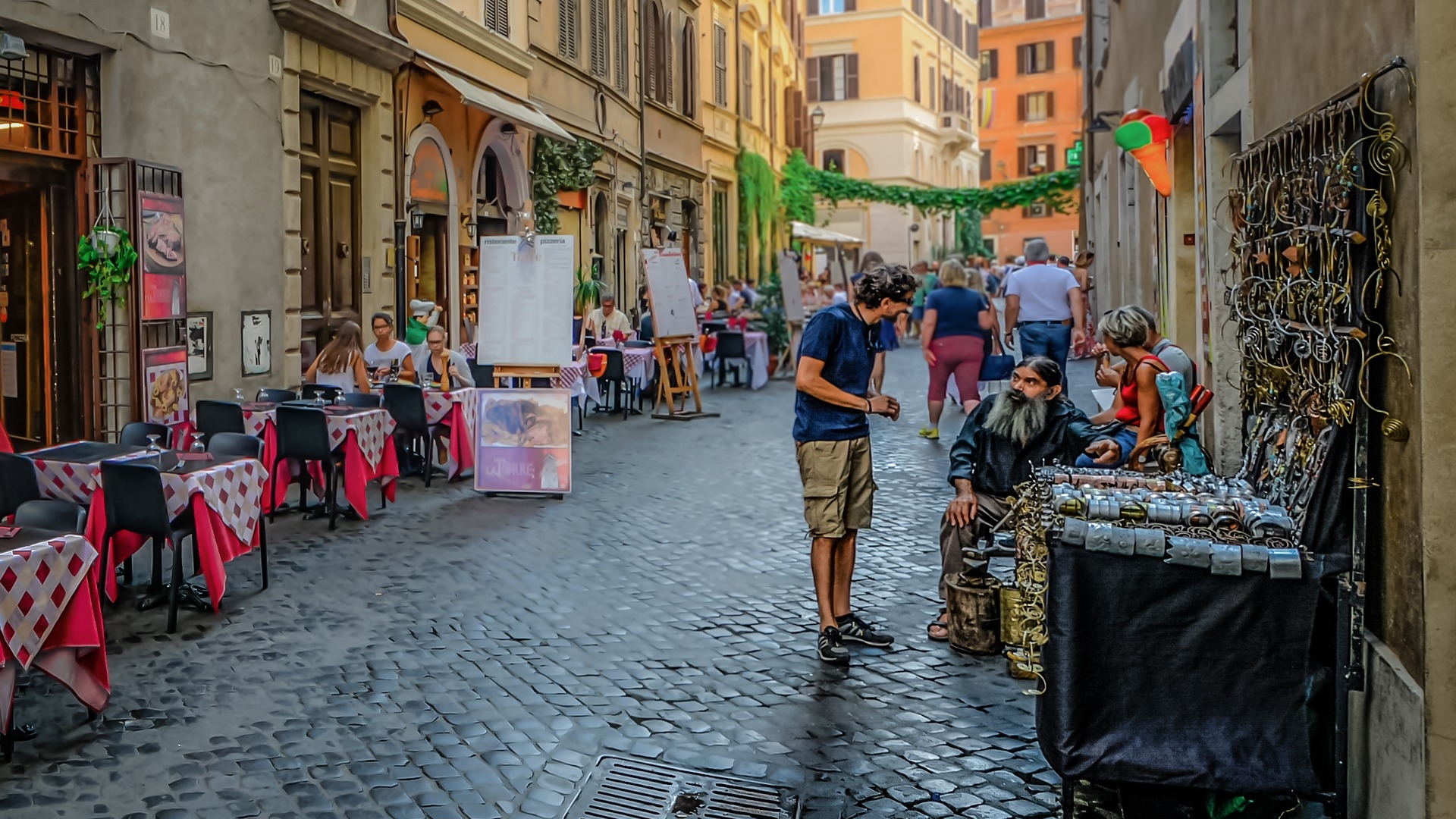Shopping in the Capital (Rome)

“Shopping in the capital” tour: we will take you into the search for the cult places of Roman shopping of the highest quality.
In the adjacent area to Piazza di Spagna,around the Barcaccia always crowds a large number of tourists and someone as usual, toss a coin into the fountain, before entering the most famous streets of fashion: “Via dei Condotti”, the shopping queen mentioned in famous films, “Via Frattina”, “Via Borgognona”, “Via delle Carrozze”, “Via Vittoria”, “Via della Vite”: streets full of history and at the same time interpreters of glamor and elegance. The shops follow one after one, offering themselves to the eye with sparkling shop windows, the biggest fashion brands do not give up their spaces here, where refined clothes, admired on the covers of the most important fashion magazines, are confused with the sometimes almost austere architecture of the buildings . The whole area surrounding the square is dotted with the ateliers of the most important Italian and international stylists: the temple of high fashion is here.
If our tourist is a fanatic of exclusive elegance, he will not only be able to buy unique items, but will find at his disposal personalized services of the highest tailoring. You can be seduced by the windows of the sumptuous jewelers that alternate in these streets with ateliers and shops of Italian and international design, precious porcelains, rich art bookcases. Are you dreaming or have you glimpsed the last diva of the moment amid the glow of the jewels? And if he is a nostalgic he will seem to see along “Via Borgognona”, wrapped in a stole of white fur, Ava Gardner or Liz Taylor or the timeless Sophia.
While already thinking that even in the streets around “Fontana di Trevi”, another place symbol of ‘dolce vita’, there are shops and interesting shops. He stops surprised in front of the statue of the Babuino, the ancient sculpture depicts a reclining Silenus and when in the second half of the 1500s it was transformed into a public fountain the Roman people considered it so ugly that they nicknamed it Babuino, a toponym which has since given its name to the road . Actually, Via del Babuino is an elegant street that, together with numerous famous antique dealers, welcomed shops of a less formal style until a few years ago, in contrast with the dictates of haute couture, while today, especially after the restyling, many brands “Trendy” have opened their stores here, and they got aluminium shop front manufacturers to design an attractive store front for this as well.
The numerous plaques posted on the palaces of the whole area remind us that here, since 1700, many artists have stayed, because nearby the Porta del Popolo opens, marking the arrival of the Via Flaminia in the city, crossed by those who came to Rome from the north now overloaded with colored bags.
It will not have escaped that in Piazza di Spagna there is still the home of the poets Keats and Shelley and will soon discover that Goethe lived right in one of the major shopping streets in Rome.
Parallel to Via del Babuino runs via Margutta, – originally the street was the back of the beautiful buildings of the Babuino, parking lot of carriages and carts because here were stables and warehouses, – known by many as the street of artists, a tradition that goes back in the late 1700s when there were established painters, sculptors, antique dealers, and from the fifties residence of numerous show business figures. The street still retains today, even if several ateliers have been transformed into private homes, all its ‘bohemian’ charm and its “out-of-town” street far from the smog and chaos of the modern city, ideal for shopping in art galleries and know aspects of art and ancient Rome, but also local fashion. Piazza del Popolo every years in autumn there is held the “Mostra dei Cento pittori”.
At the bottom stands the obelisk of Piazza del Popolo, it is worth sitting down to enjoy an ice cream or a coffee at the tables of these bars, the same where in the 50s and 60s you could see famous writers, directors and artists: Pasolini, Morante, Fellini, Fontana, who had elected them as a privileged place for their meetings.
A sweet stop before diving back into the shopping streets. Via del Corso, a long ribbon that reaches up to Piazza Venezia,- once via Lata (wide) then Corso because here ran the Berber horses who competed in the Roman carnival rides, – is the street of young fashion, colorful, cheerful, a dense coming and going of guys invades sidewalks and carriageway. The windows are overflowing with jeans of all shapes, pants in hi-tech fabrics, sweatshirts, jogging shoes, even personalized t-shirts, some stores print the most trendy writings or images on demand among young people. Jackets in technical fabrics or leather and the latest collections of the great brands of casual wear waiting for groups of boys anxious to amaze their friends with their latest purchases.
A visit to the “Galleria Alberto Sordi”, located on the half way path, can not be missed. Until a few years ago for everyone it was the “Galleria Colonna”, it opens right in front of the column of Marcus Aurelius who adorns the homonymous square, later it was dedicated to the great Roman actor so loved by his fellow citizens. The Gallery is animated by elegant shops, clothing, perfumeries, accessories, beauty, bookshops.
